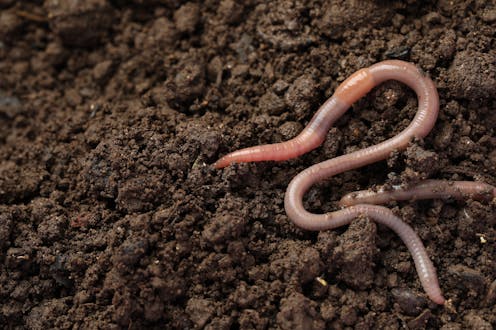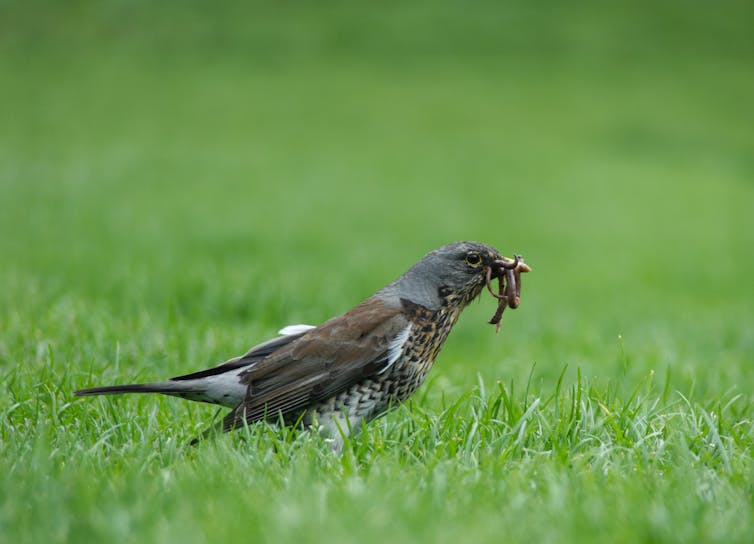
Earthworms are revered for the way they nourish healthy soils, and scientific evidence validates the affection gardeners feel for these industrious invertebrates. Nevertheless, research has shown that our soil-dwelling friends may be less benevolent as the climate crisis escalates and grants them access to recently defrosted northern soils.
Historically, earthworms were viewed alongside slugs and snails as garden pests and thought to eat flower and vegetable roots from beneath the soil surface. They were killed and removed from gardens until more informed naturalists like Charles Darwin made observations that showed their worth.
Sometimes referred to as “Darwin’s plough”, earthworms naturally till the soil and increase its fertility by pulling leaves underground where they rot and enrich the soil.
Earthworms are considered ecosystem engineers too – species with an outsized influence on their environment. As such, they carry out numerous activities that are beneficial to us, including the formation, drainage and aeration of soils. They are also a protein-rich food source for birds and mammals.

Unfortunately, they now have what may be perceived as a darker side.
Globetrotters without feet
European earthworms, such as the well-known lobworm (Lumbricus terrestris), the large and darkly pigmented worm you’ve probably seen writhing in a patch of upturned soil, are now found worldwide. Centuries ago they travelled in the soil of crop and fruit-bearing plants as they were taken by settlers to new lands. On newly ploughed farms this was seen as a bonus and these introduced worms bolstered food production.
More recently, these introduced earthworms have established themselves in more natural habitats, such as the temperate forests of North America. More often than not, their arrival in these forests has been as discarded fishing bait. There, the earthworm’s tendency to bury fallen leaves and till the soil has caused problems, severely altering the nutrient status of the soil, exposing tree roots and reducing cover for ground nesting birds.
Earthworms are now viewed as invasive alien species in such ecosystems. Further north, in the boreal forests of Arctic and sub-Arctic Canada, an even greater problem is growing
Arctic soils are thought to store around half of all the carbon locked up in soil globally. The greatest risk to the carbon storage of boreal forests was always assumed to be forest fires, which may be increasing as a result of rising global temperatures.
But earthworms may actually pose as great a threat. As land that was once covered with ice or in a semi-permanent frozen state thaws, the carbon-rich nutrients it held for thousands of years become accessible to microorganisms and soil-dwelling animals.
After the last ice age, no earthworms were present in northern soils. Since these creatures spread through the earth at a rate of only 10 metres per year under normal circumstances, even if they could survive, they wouldn’t be expected to reach such regions for centuries.
Heading north
But by building roads and pursuing recreational activities like freshwater angling, people are accidentally transporting ecosystem-engineering earthworms into areas where recently defrosted soil awaits. Again, it is abandoned, living fishing bait that creates a new invasion front.
By exercising their natural behaviour, earthworms are unlocking carbon from this soil and much of it is being released into the atmosphere as carbon dioxide. A study published in 2015 predicted average losses of 10g of carbon per square metre of forest floor per year – a similar figure to that released by wildfires or the removal of trees for timber.
You might think earthworms would struggle to survive Arctic winters, but some, such as the octagonal worm (Dendrobaena octaedra) are relatively freeze-tolerant and their eggs can survive temperatures of -35°C. Others, such as the lobworm, can burrow deep to survive freezing temperatures above. Such species, once established, are not easily eradicated.

In these newly available soils, earthworms are interacting with a range of microorganisms and enabling them to more easily decompose plant matter which was previously locked up in ice, generating large volumes of carbon dioxide, methane and other greenhouse gases in the process.
This creates a positive feedback loop as the further release of greenhouse gases accelerates temperature rise. This is probably an unstoppable process and the best action with respect to earthworms is to prevent their accidental introduction at further sites in the sub-Arctic through education and, potentially, the policing of recreational areas.
Earthworms are vital in most soils, but in extremely northern latitudes, a massive shift has occurred in our view of these exceptional animals. Globally, we – the general public, governments, industry and scientists – must begin to address the issues of the climate crisis that affect us, earthworms, and indeed all living things on Earth.

Don’t have time to read about climate change as much as you’d like?
Get a weekly roundup in your inbox instead. Every Wednesday, The Conversation’s environment editor writes Imagine, a short email that goes a little deeper into just one climate issue. Join the 20,000+ readers who’ve subscribed so far.
Kevin Richard Butt does not work for, consult, own shares in or receive funding from any company or organisation that would benefit from this article, and has disclosed no relevant affiliations beyond their academic appointment.
This article was originally published on The Conversation. Read the original article.







